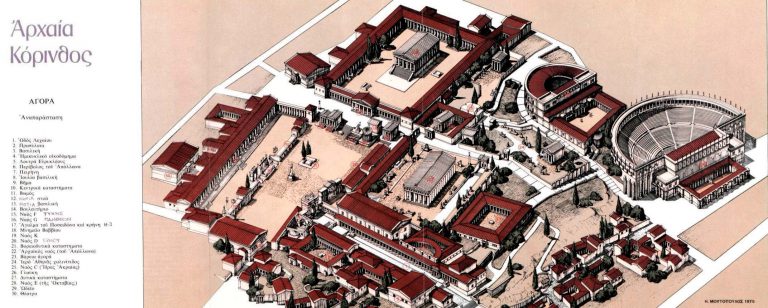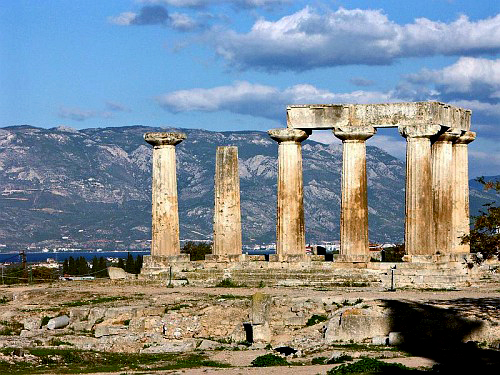
The remains of Corinthian Olbia are both numerous and fascinating. Among the most important monuments is the Archaic Temple of Apollo, an imposing structure even today. Built around 530 BC, it is famous for its monolithic Doric columns, seven of which still stand proudly above the ruins of the ancient marketplace.
The temple featured 6 columns on its short sides and 15 on the long sides. Inside, additional columns supported the roof along the length of the elongated cella, which was divided into two rooms. The temple also included a pronaos (front porch) and opisthodomos (rear porch), each with two columns between antae (projecting side walls).
The marketplace (Agora) itself had a rectangular layout, measuring approximately 160 meters in length and 70 meters in width. Surrounding the marketplace were several key structures, most notably the southern stoa, composed of a row of identical shops. Each shop was divided into two rooms, and in front of them ran a double colonnade.
The outer colonnade followed the Doric order, while the inner colonnade used Ionic columns. Between the two colonnades stood the Parliament Building, elegantly inserted into the architectural rhythm of the stoa.
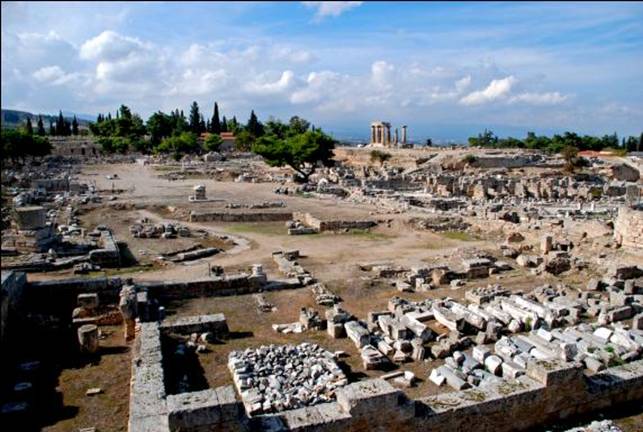
Another row of market shops is the central row, featuring the “Apostle Paul’s Step” between them. Beyond this lies another row—the northwestern shops—which include the characteristic arched building nestled among them.
Leaving the market and descending the monumental steps of the Propylaea, we approach Lechaiou Street. Nearby is the Piraeus Fountain, with its six cave-like openings, as described by Pausanias. Also of interest is the Glaucus Fountain, carved directly into the rock.
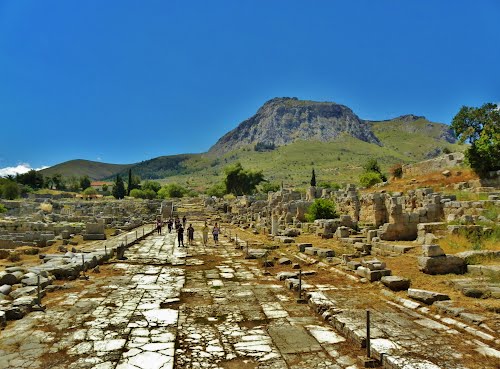
Outside the main archaeological site, the following monuments are open to visitors: the Odeon, built at the end of the 1st century AD and later renovated by Herodes Atticus. At that time, a courtyard with surrounding colonnades was added, bringing the Odeon closer architecturally to the theatre located slightly below.
Traces of an earlier theatre, dating back to the late 5th century BC with a wooden stage, have been identified. By the 3rd century BC, the theatre had acquired a built stage.
The cavea (seating area) is estimated to have accommodated up to 18,000 spectators. At the beginning of the 3rd century AD, the orchestra was transformed into a Roman arena for beast fights. North of the theatre lie the remains of the gymnasium.
Finally, near the spring of Lerna is the Asclepieion. Excavations revealed that it was carved largely into the rock. The temple measured 14.93 by 8.32 meters and featured a septum and a porch with four Doric columns at the front.
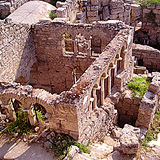
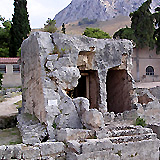
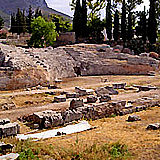
Outside the main archaeological site, the following monuments are open to visitors: the Odeon, built at the end of the 1st century AD and later renovated by Herodes Atticus. At that time, a courtyard with surrounding colonnades was added, bringing the Odeon closer architecturally to the theatre located slightly below.
Traces of an earlier theatre, dating back to the late 5th century BC with a wooden stage, have been identified. By the 3rd century BC, the theatre had acquired a built stage.
The cavea (seating area) is estimated to have accommodated up to 18,000 spectators. At the beginning of the 3rd century AD, the orchestra was transformed into a Roman arena for beast fights. North of the theatre lie the remains of the gymnasium.
Finally, near the spring of Lerna is the Asclepieion. Excavations revealed that it was carved largely into the rock. The temple measured 14.93 by 8.32 meters and featured a septum and a porch with four Doric columns at the front.
A particularly remarkable digital reconstruction of ancient Corinth as it appeared in the second century AD, during the Roman Empire, is featured in a short video available on YouTube at https://youtu.be/dEHPfMIyLfc.
The video is the result of the work of three creators—Danila Loginov, Andrey Zarov, and Vyacheslav Derbenev—who gathered historical data from a variety of online sources. Using specialized software, they succeeded in virtually “bringing to life” the glorious ancient city of Corinth, much of which no longer survives today.


